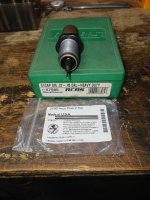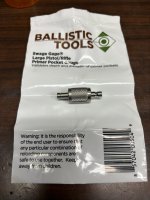joe16
Hammer Time Executive member
This past year there has been a lot of posting about primer pockets and pressure (this place is awesome). So I wanted to share a new procedure that I added to my bench. I contacted BFD today to see where he thought this would be best added and after chasing down his thread (there was a lot of derail at the end) and I decided that I didn't think people would read all the way to the end. He also suggested that I start a new thread and he and GL would do a Sticky. 
I'm not sure if any one person has the right procedure sitting at their bench without the correct pressure gauges and barrels to come up with the correct answer, I'm pretty sure I don't! But what did I learn this year from all these discussions? I learned about pin gauges. So I decided to add a pin gauge to my procedure, each time I fire piece of brass I will Decap it and measure the hole with a .2100 pin gauge if it fails it goes in the trash. This is a mechanical test that I can wrap my brain around and not have to use the calculator or the dial calipers or any of the other means of guessment.
Depending on manufacturer and where ordered from, it was basically $10 to the house,. Having OCD like most hand loaders, I don't mind one more stroke on the handle watch your jokes people
watch your jokes people . I'm also quite sure that there's a few of you that already do this. I just wished I would have learned it years ago, that's all. I just wanted to share this with y'all.
. I'm also quite sure that there's a few of you that already do this. I just wished I would have learned it years ago, that's all. I just wanted to share this with y'all.
Joe

I'm not sure if any one person has the right procedure sitting at their bench without the correct pressure gauges and barrels to come up with the correct answer, I'm pretty sure I don't! But what did I learn this year from all these discussions? I learned about pin gauges. So I decided to add a pin gauge to my procedure, each time I fire piece of brass I will Decap it and measure the hole with a .2100 pin gauge if it fails it goes in the trash. This is a mechanical test that I can wrap my brain around and not have to use the calculator or the dial calipers or any of the other means of guessment.
Depending on manufacturer and where ordered from, it was basically $10 to the house,. Having OCD like most hand loaders, I don't mind one more stroke on the handle
Joe



